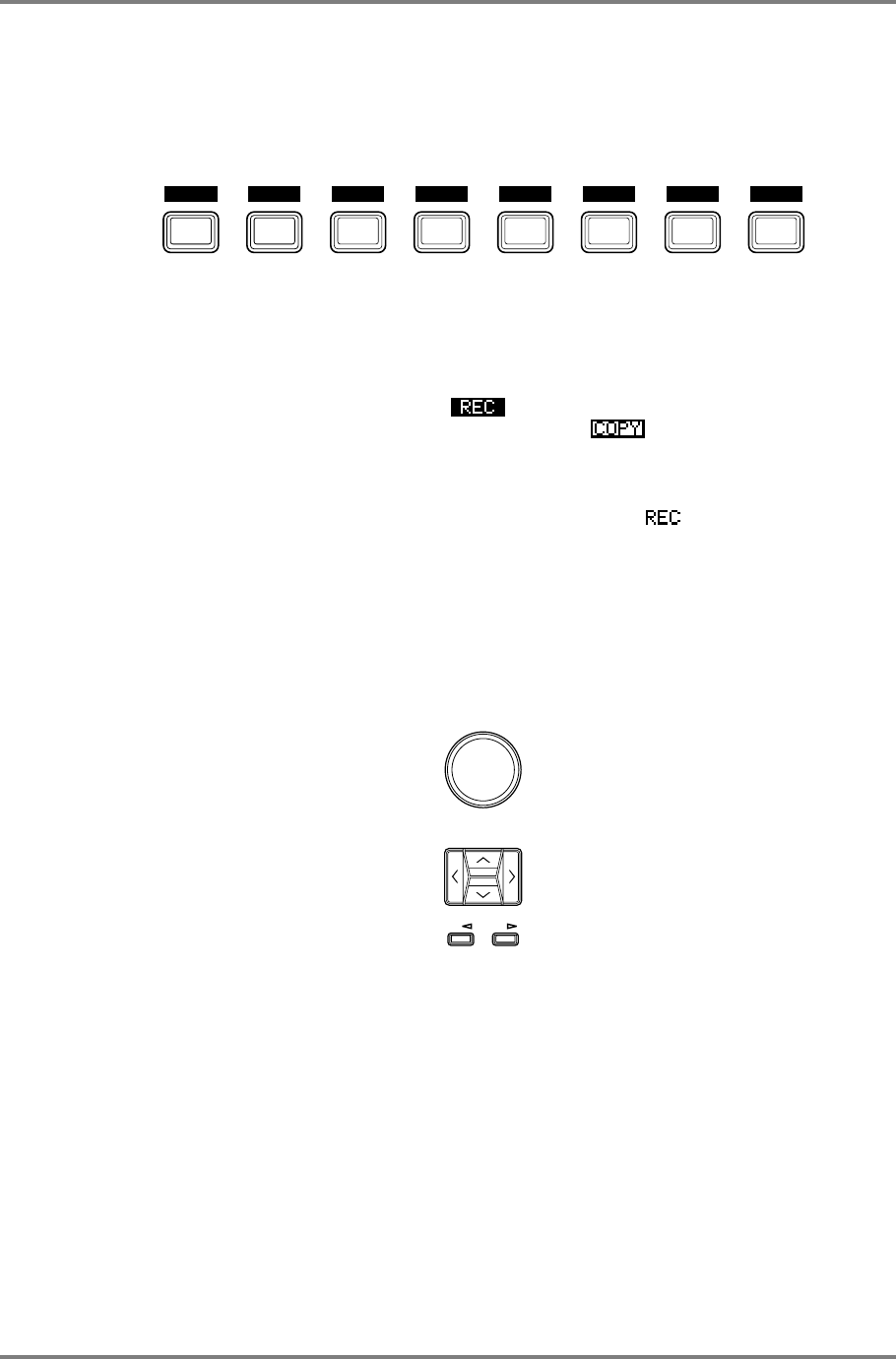
INTRODUCTION
CD3000XL OperatorÕs Manual Page 17
SOFT KEYS
The SOFT KEYS directly under the LCD call up various functions and pages within each mode
- these vary from mode to mode and have no pre-defined function. As such, they cannot be
easily explained here!
F 1 F 2 F 3
F 4
F 5 F 6 F 7 F 8
There are many common keys in many of the functions, however, such as, for example, COPY,
RENAME and DELETE which are always on F6, F7 and F8 in those pages where they appear.
Commands such as GO, and ABORT always appear on F7 and F8. There is also a convention
to the type of functions available which is worth noting.
If a key has this highlighted type of display: then this signifies that pressing this key will
take you to another page. If the key has this type of display: (i.e. the function simply has
a box around it and is unhighlighted) then this signifies that the key is an ‘do it’ key and will
instigate some kind action such as SAVE, LOAD, DELETE, GO, ABORT, etc..
If the key has no form of box around it and is not highlighted - i.e: , then this indicates the
page you are currently in although this is always shown in the top left corner of the display as
well. This type of key switches between two types of display - pressing it once displays note
names, pressing it again displays notes as MIDI note numbers.
SELECTING PARAMETERS AND ENTERING DATA
You move around the screen using the CURSOR KEYS and data is input from the DATA
ENTRY ENCODER. You may move around within digit fields using the -/< and +/>.
CURSOR
DATA
+/–/
Turning it clockwise increases numeric values, and turning it counter-clockwise decreases
these values. You may also use the -/< and +/> keys to position the cursor on the ‘tens’ or
‘hundreds’ field to make more rapid changes. For non-numeric values (i.e. sample rates,
sample type, loop type, etc.), turning the encoder will display all the options in order. Normally,
there is no other entry procedure required; simply displaying the correct value of a parameter
using the DATA encoder selects and stores it into the CD3000XL’s memory.
When editing numeric parameters, some of the values can be quite large, and it would be
necessary to turn the DATA WHEEL thousands of times (literally!) in order to go through the
whole range if the value was only changed by 1 for every click of the DATA control. There is an
alternative to turning the control thousands of times, though. When you press the CURSOR
keys, you move from one parameter to another and, using the -/< and +/> keys, you may move
around within a large numeric field.


















